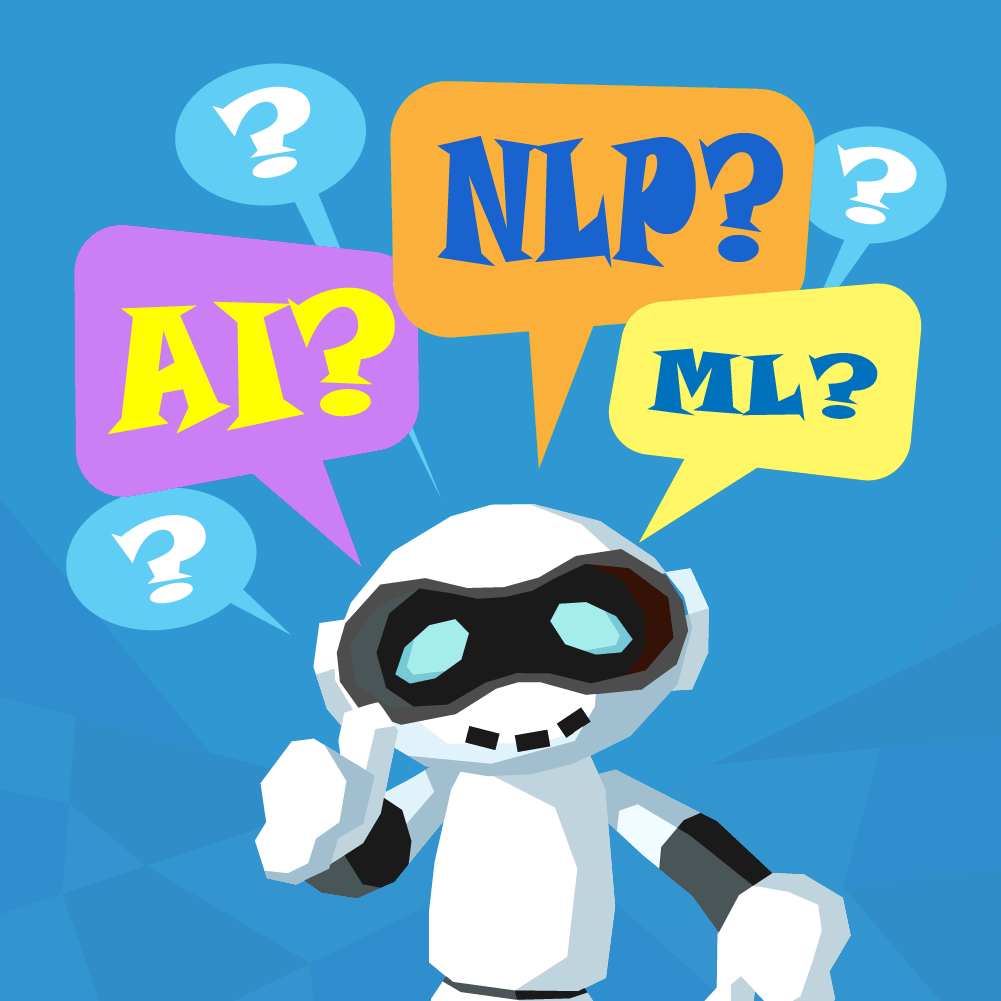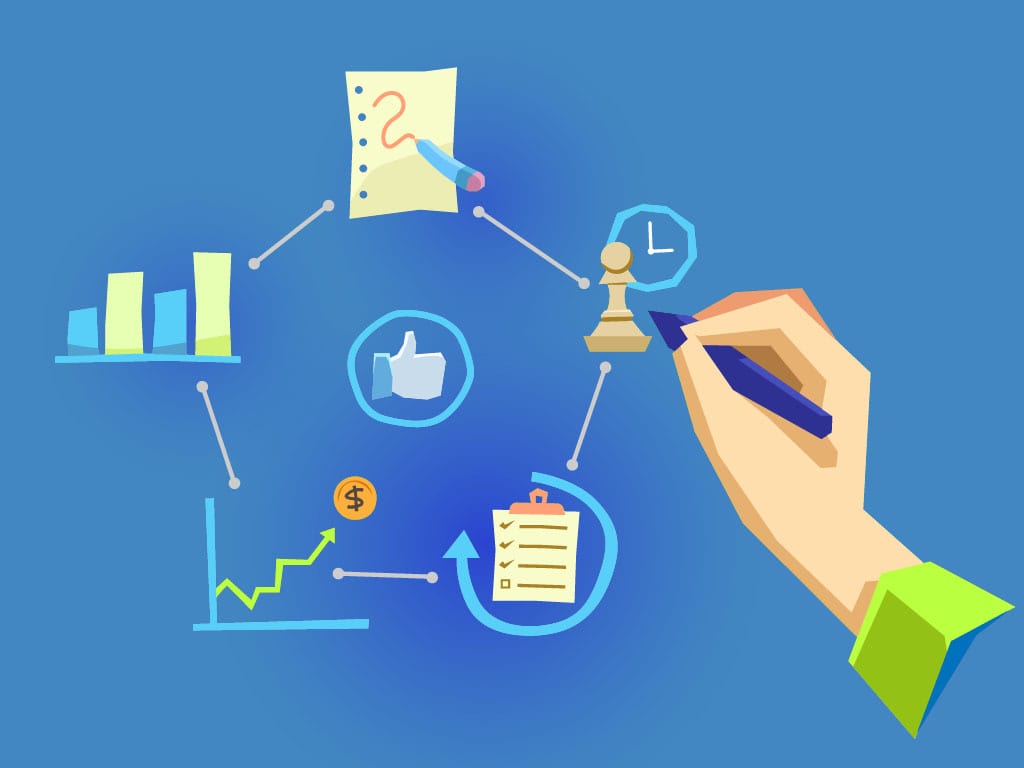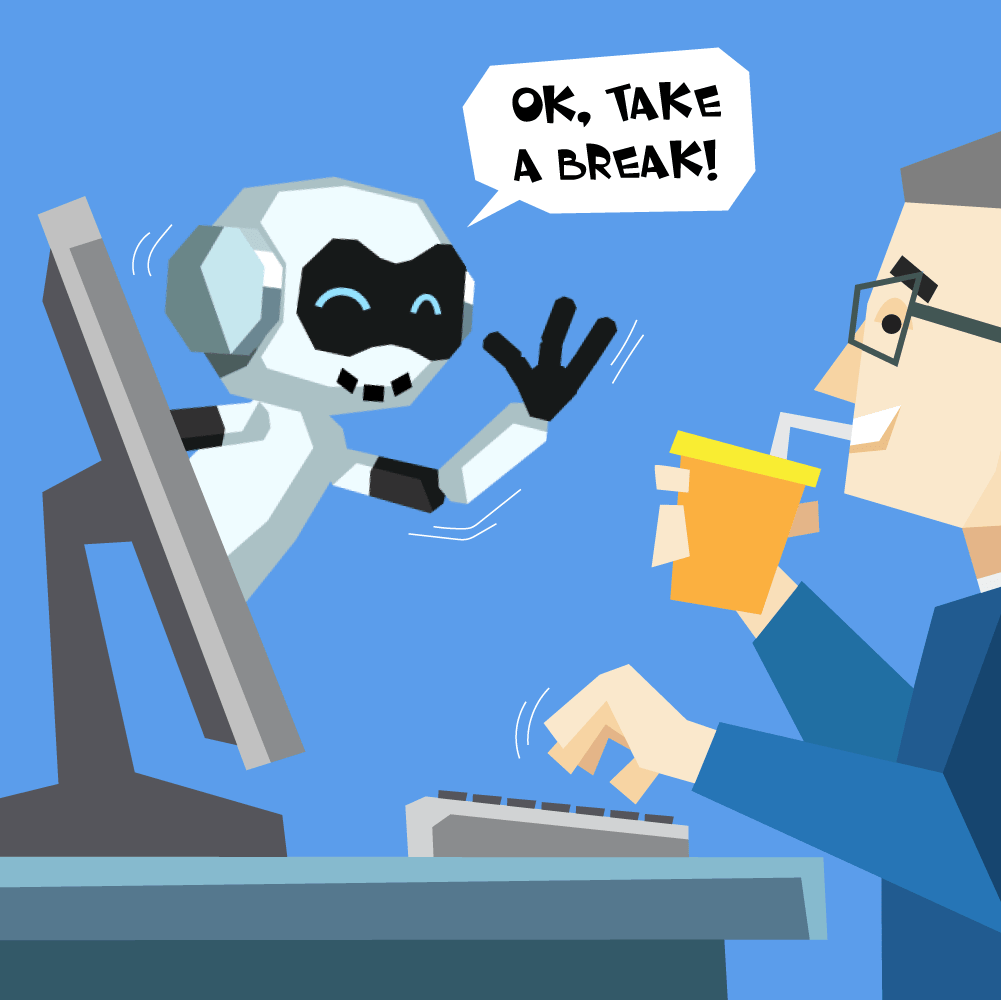Creating Bots that Are Constantly Learning and Improving

The advent and evolution of hardware and software robotic systems within the operations of SMEs – and larger enterprises – has given global businesses the opportunity to reduce overhead, automate simple (and even complex) workflows, while often giving customers and end-users an enhanced, quick, and more streamlined
Experience. One of the most significant modern implementations of software robotics is with chatbots, or simply bots. Chatbots are Artificial Intelligence-based software programs that are designed to automate marketing, sales, personal assistant, and customer service workflows, while allowing customers to engage with their favorite brand via a direct communication line with the enterprise’s systems – also via chatbots. Chatbots allow customers to communicate and interact with an enterprise’s human-like software program to fulfill their needs, whether it is asking a question about a product/service, or requiring aid with a purchase, or asking for help with troubleshooting an already-purchased product. Bots are evolving at a rapid pace, and are being implemented in a variety of software apps, mainly associated with messaging/social media platforms and business applications. With such integration, chatbots are able to radically change “business as usual,” and are becoming a mainstream tool for businesses to communicate with their customers.
Chatbots are complex applications available in a variety of forms, including web-based bots, app-based bots, and stand-alone bots. Regardless of the type of bot, all chatbots require an interface for humans to interact with the company’s backend computer systems. Additionally, for bots to interact with the standard layman, they must be able to communicate and understand human language and human conversations. Thus, there are a number of ways for Chatbots to communicate and interact with humans, such as via Natural Language Processing (NLP) or via a Conversational User-Interface (CI/CUI).
While Chatbots are quickly becoming the norm, there are many mysteries surrounding their implementation and use. To fully demystify and understand what Chatbots are and how they work, one must understand Artificial Intelligence, Machine Learning/Deep Learning, and NLP/CI, along with hybrid interface systems that combine NLP with CI.
Breaking AI, ML, NLP into Bite Sized Pieces
Artificial Intelligence (AI), Machine Learning (ML), and Deep Learning (DL) are all popular buzzwords in today’s global ecosystem of small, medium and large enterprises, yet – while they represent common themes, they are different systems. While it is important to understand what each system represents in the grand scheme of things, more important is how they apply to chatbots. To operate in the same manner as a human when interacting and communicating with humans, chatbots must utilize a complex system of algorithms that allow it to “replace” a human and act as an automation robot and personal assistant. This is where AI, ML, and DL come into play, along with NLP.
Artificial Intelligence
Artificial Intelligence can be defined as a computer system that is designed to operate and “think” like an intelligent human being with the ability to communicate, understand context, utilize neuro-like cognition, and “learn” like a human being. It is important to recognize that AI is an umbrella term that is not necessarily the recent, advanced concept of Machine Learning that has swept the world in recent years. AI was first introduced decades ago in a more simple manner, and encompasses any computer system that is programmed to operate in a way that is similar to a human. Chatbots benefit from AI by allowing the bots to operate like a human being, including the ability to “think” like a human to aid human customers.
Machine Learning
Machine Learning is a sub-concept of the overarching system of AI (while deep learning is a sub-concept of ML), and encompasses a more advanced model of general AI programming. ML applies complex programming to a bot that allows the computer-based system to re-program its own algorithms, based on learning/experiences, to operate more efficiently and modulate its own behavior in the future, without being programmed directly to do so. This is the essence of “learning” from a cyber-perspective.
At the heart of complex ML/DL is neural networks, which simulates the neural networks of the human brain in a cyber system to allow a software “cyberbrain” to exist, grow, and apply the laws of neuroplasticity that allow bots to “think” and “learn” like a human. The core aspect of ML/DL and neural networks is that the software “learns” how to solve problems based on past experience and large datasets, instead of being explicitly programmed to. This allows the bots to operate like a human and deliver the most efficient customer experience possible.
Natural Language Processing
NLP is a system of AI and linguistic science that studies how computers and humans can interact via human languages. This complex implementation of computational linguistics can give humans the ability to use human language via chatbots to tell a computer what to do, without the use of computer syntax, bash shell scripting, or GUI-based, point-and-click methods. NLP can allow a human to interact with a chatbot via text or voice speech, for example.
Who’s Ruling the Chatbot Game?
As detailed before, humans must have a pertinent interface to communicate and interact with computer systems. The main competitors for human-to-computer communication methodologies are NLP and CI. While both have much to offer, a third system – the hybrid system – seeks to utilize both as the most efficient manner of allowing humans to interact with computer systems.
CI: The Rising Star of Chatbot
One of the most significant strides in the evolution of chatbots is the advent of the conversational user-interface (CI or CUI). CUI offers a powerful paradigm shift that allows humans to take command of computer systems using human-like communication methods (i.e. text and voice commands), as opposed to having to utilize computer syntax and computer commands. When combined with chatbots, this entails utilizing dialogs with an AI-based “smart” system, as opposed to GUI-based menus, icons, and/or command fields. It is noteworthy that while CI can utilize some aspects of NLP, CI may use other systems for human-like communication and interactions between a human and computer, such as a variety of dialog-based methodologies.
NLP: The All Knowing Mater Computer
NLP encompasses a more voice-based communication method for allowing a human to interact with a computer based on what the human says. This complex system requires very precise programming with regard to understanding human languages, context, conversational flow, and must also be able to both understand and reply based on the human language utilized. Additionally, since the main purpose of a bot is to carry out an action based on the voiced desires of a human, the bot must be able to translate the human words into the desired action, along with supplying the appropriate response.
Creating a Conversational Flow for your Chatbot
While traditional apps utilize a flow of menus and tabs/icons, chatbots use dialogs in their place. This means that developers have the opportunity to supply a “menu” via a specific dialog, and to separate different interactive dialogs in the same way that different sections of an app (via tabs) would be separated. To this end, the absolute core of a chatbot is the conversational flow. This flow dictates how the chatbot operates, and how enhanced the user experience will be. While some dialogs are GUI-based (with icons and tabs), some are entirely speech or text based. The dialog and conversational flow can be thought of as a dialog stack, with the opening dialog (equating with the “home menu”) being the root dialog. With each new “section” of the app (based on dialogs), a new order dialog can commence until a different conversation begins (“Design and control conversation flow”) [1].
Additionally, it is important to understand the different between structured (linear, ordered, logical) and unstructured (non-linear, “random,” arbitrary) conversations. While structured conversations are linear and logical, such as “yes/no” conversations, unstructured conversations – which are more comparable to real-life conversations between humans – do not necessarily follow a defined path. Chatbots must be programmed to understand and reply when faced with both types of conversations, the latter (unstructured) requiring complex AI programming and ML/DL.
Combining NLP and CI: Hybrid is King
While utilizing NLP over CI, or vice versa, is a large topic among the chatbot development community, one of the most popular methods of supplying an interface between a human and chatbot/computer system is via a hybrid approach. This hybrid approach includes both a NLP and CI system, which equates to a chatbot that uses a voice/text-based (dialog) interface with GUI-based icons, tabs and menus. Such a hybrid approach is a “best of both worlds” solution that gives users the ability to leverage the power of language, while still utilizing tried-and-true, familiar methods of GUI-based interactions.
Why Chatbots Need Help form Deep Learning
Since the essence of a chatbot is to collect data, parse data, and learn from experience – in order to operate more efficiently in the future by processing customer behaviors, environmental information, and other factors – such bots require a complex system to allow them to “think” and “learn” like a human. Chatbots cannot reliably be programmed directly to behave in more and more efficient ways based on past experiences, as such a task would require a great amount of constant reprogramming by a developer. Thus, the end solution and end goal is for a chatbot to utilize ML/DL to grow, learn and apply both an understanding of language and context using data from past conversations to reprogram themselves for more efficient behavior in the future.
Answering Complex Questions by Analysing Contextual Situations
As noted by VentureBeat.com, “Understanding context, disambiguating between subtle differences in language that can lead to wildly different meanings, employing logical reasoning, and most crucially, understanding the preferences and intent of the consumer, are just a few of the many challenging tasks a system must be able to perform to sustain conversation with a human” (“Why Chatbots need a big push from deep learning”) [2].
Human language is very complex. In order for computer systems to understand human language, the conversational flow system must be well-built, and the bot must understand the structure of the conversation along with the context. When a question is asked by a human, the bot must understand the structure of the question, the keywords (based on analyzing data sets) in the question that set the context, the specifics of the grammar, etc. By analyzing contextual situations, and understanding unstructured conversations based on robust AI/ML/DL programming, the bot should be able to understand user questions and reply accordingly.
Deep Learning First Needs Deep Data
In order for any data-driven application/bot to “learn” and reprogram itself for more optimal behavior in the future, it needs massive data sets for it to learn from. For instance, the NLP-based chatbot, Xiaoice, was developed by data mining the Chinese Internet for human discussions, giving the bot the ability to “learn” and think like a human when it comes to both understanding and replying in human-based conversations. In the same way that a human child “learns” by taking in and processing large amounts of “data” over a number of years (when learning a human language), so bots must similarly “learn” from large sets of data that enable it to think like a human and understand human conversations. Since deep learning is a “learn by example” model within the overarching model of ML, it is a core system that is used to develop complex chatbots.
It’s True Power: Making Logical Connections and Coming Up with a Conclusion
Within everyday human conversations, each word in a sentence helps to define its context. But some words – keywords – can help a bot “learn” and “think” by giving the bot logical connections between sentences, so it can understand the whole conversation, draw pertinent conclusions, and respond accordingly or take the appropriate action. In order to do this, complex deep learning programming is required, along with learning via large data sets. Additionally, the conversational flow must be designed in a robust manner in order to allow the bot to understand the context of the human dialog and respond accordingly.
Blending Consumer Preferences, Environment and Language into One
When understanding the words of a customer, a chatbot’s duty is not only to understand the desires of the user and take a desired action, but to analyze the customer’s preferences and behavior so that future interactions will be more streamlined and enhanced. So while language is an important factor when it comes to chatbot development, a chatbot must also utilize a robust data analytics engine, along with applying past conversations, the current words of the customer, and data associated with customer demographics, specific customer needs, and the customer’s environmental factors in order to fully offer a more robust experience.
Companies Who are Creating Exceptional Chatbots
As chatbots have evolved to become mainstream tools of customer service enhancement and automation, several large and small companies have begun to invest heavily in their development. Well-known enterprises, such as Facebook, Microsoft, Apple, Google and Amazon – among many others – have already developed powerful NLP and CI-based AI-chatbots within their platforms and apps. While X.ai, Mitsuki, and Xiaoice are examples of NLP-based Chatbots, Landbot.io is an example of a CI-based chatbot.
Microsoft
Microsoft has helped to pioneer powerful technologies in recent decades, including their MS bot framework and Azure bot service, along with leveraging their AI/ML service with chatbot development and technology.
Recast.AI
Recast.AI is an AI/bot development and deployment platform, which also allows developers to train and monitor their intelligent bots from start to finish.
Api.ai
API.ai is a platform which aids developers build conversational voice assistant-bots and chatbots, all based on complex AI.
Chatfuel
Chatfuel is a robust chatbot development platform designed for the development of complex, AI-based chatbots for the Facebook/Messenger platform. As a powerful bot-development platform, Chatfuel does not require code, and thus is a feasible tool for non-programmers.
ChattyPeople
ChattyPeople is a powerful platform for the development of chatbots and supports a number of platforms, including Facebook, Skype, Slack, and websites, all with support for NLP, CI, and hybrid interfaces.
Summary
Chatbots are a novel, powerful technology that have the capability to radically alter how businesses operate and how humans, as a whole, interact with computer systems. From streamlining and reducing the time of interfacing with customer service, to helping to automate critical business tasks, chatbots are a significant evolution from traditional software applications. In order to harness this new technology, it is important to understand how AI-based chatbots operate, what they can do, and how they do it.








